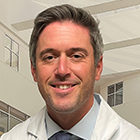Electrophysiology Study
Patients with abnormal heart rhythms may require an electrophysiology study. In this procedure, multiple small plastic catheters are advanced into the heart through veins at the top of the legs. These catheters are then connected to a computer and the electrical system of the heart analyzed. Frequently, the cause of the patient’s irregular heart rhythm can be determined in this manner and treated (in the same setting) with radio frequency ablation.
This procedure is performed in conjunction with an electrophysiology study. When the cause of a patient’s irregular heart rhythm is identified, a steerable catheter is advanced to the abnormal area in the patient’s heart. Energy (“radiofrequency” energy) is then delivered causing the tip of the catheter to heat up. This cauterizes a small (4-8 mm) area of the heart responsible for the abnormal heart rhythm and is curative in a high percentage of cases.
Pacemaker Implantation
Pacemakers are devices used to treat slow heart rhythms. They are about the size of a silver dollar and are implanted under the skin below the right or left collar bone. In addition to the actual pacemaker unit, between 1 to 3 wires (leads) are advanced into the heart where their tips connect to the heart muscle. The other ends plug into the pacemaker unit.
ICD (Defibrillator) Implantation
Cardiac defibrillators (commonly known as “ICD’s”) are implantable devices that treat both fast and slow heart rates. In comparison, pacemakers are only able to speed up (not slow down) a slow pulse. The devices are larger than a pacemaker and are the size of a small deck of cards. They are implanted under the skin below the right or left collar bone. In addition to the actual ICD unit, between 1 to 3 wires (leads) are advanced into the heart where their tips connect to the heart muscle. The other ends plug into the ICD unit.
Device Extraction
In rare situations, an ICD or pacemaker may need to be removed. The most common cause for removal is infection. Since the device and leads heal into the body, their removal requires specialized tools and expertise. These tools allow the leads to be “extracted” or removed from the scar tissue around them without injury to the body.
Cardiac Resynchronization
In patients with weak heart muscles and shortness of breath, specialized ICD’s (“cardiac resynchronization” or “biventricular” ICD’s) are frequently implanted. These devices typically have 3 wires that attach to the heart. The ICD then uses these wires to coordinate the timing of each heart chamber. This improves the heart’s efficiency and usually reduces symptoms of shortness of breath. The timing profile for each patient is unique and is calibrated using a procedure known as “echo optimization.” This non-invasive procedure uses ultrasound to determine an optimal timing pattern for each patient. This data is then programmed into the ICD. The physician that performs this procedure is Andrew Fireman.
Atrial Fibrillation
Atrial fibrillation, otherwise known as AF or Afib, is the most common type of irregular heartbeat. The heart, pumping at either a rapid or slow pace, tends to disrupt the flow of blood to both the upper and lower chambers. Afib increases the risk of stroke, heart disease, and heart failure. Read more.



